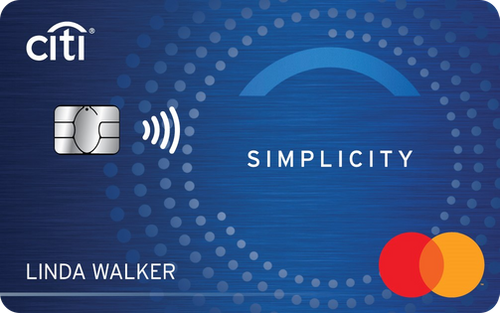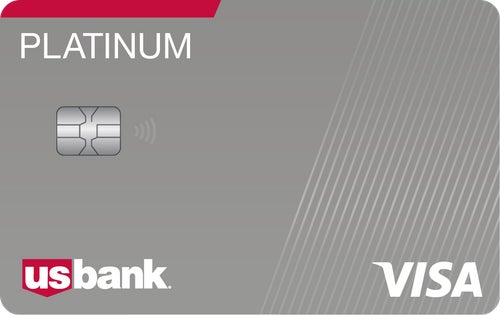
BankAmericard® credit card
- Intro Offer
-
No current offer
- Annual fee
- $0
- APR
- 16.24% – 26.24% Variable APR on purchases and balance transfers
- Recommended Credit A credit score is used to indicate an applicant’s credit worthiness and may provide guidance about account eligibility. It does not necessarily guarantee approval for any financial product.
-
670 – 850
Good – Excellent
- Rewards rate
-
N/A This card doesn’t offer cash back, miles, or points
The BankAmericard® credit card* lets new cardholders avoid paying interest charges on the balance of another credit card by transferring it to the BankAmericard.
This card features a solid introductory interest rates for new purchases and balance transfers alike, so you can also use it to finance large or emergency expenses without breaking the bank. You won’t earn rewards on any purchases, though. As such, it’s a good card to pair with a rewards credit card in order to earn a return on your spending.
If you do need to utilize a balance transfer to help mitigate credit card debt, just be aware you’ll need to pay a balance transfer fee to do so. The BankAmericard has an introductory balance transfer fee of 3% of the amount of each transaction for 60 days from account opening (then 4%), which is the industry average among balance transfer cards. You’ll also have to make any balance transfers within 60 days to qualify for the introductory interest offer.
Introductory APR on balance transfers
The BankAmericard balance transfer offer can help you lessen the weight you might be feeling beneath mounting credit card debt.
Cardholders will have the chance to transfer a balance from a high-interest credit card and pay it down at 0% introductory interest for 18 billing cycles (then 16.24% to 26.24% variable).
18 billing cycles is essentially 18 months, so you’ll have a respectable chunk of time to get the balance down to zero. It’s on par with many of its competitors, with a few exceptions that provide 21 months.
Again, just keep in mind that you’ll need to make any balance transfers during the first 60 days of account opening in order to qualify for the introductory offer.
Once you’ve transferred over a balance, it’s a good idea to pay more than the minimum each month to ensure you can pay the balance down in time. To figure out how much you should pay each month, divide the transferred balance by the number of months (or billing cycles) you have to pay it down.
For example, if you transferred a balance of $5,000 to the BankAmericard, you would need to pay about $278 (5,000/18) monthly to get the balance down in time. However, consider paying even more than that each month, if your finances allow, to really be sure you can get the balance paid off before the standard APR takes effect.
Keep in mind that once you transfer a balance and begin to pay it off, making new purchases on the card will still cause your statement balance to go up. So, if you do plan to use the BankAmericard for new purchases following a balance transfer, just remember you’ll need to calculate any new balances into your monthly payments.
Why use a balance transfer?
A balance transfer is a good way to get rid of credit card debt quickly and avoid interest charges by doing so.
You can pay your balance down faster by applying any cash you would’ve normally used for interest charges toward the transferred balance. Your bank account -- and your credit score -- will thank you in the long run.
Lowering your credit utilization (the percentage of your overall credit you’re using) will have a positive impact on your credit score. Basically, by lowering your credit card debt, you’ll also lower your credit utilization, and your credit score will be all the better for it.
Is paying the balance transfer fee worth it?
The short answer is yes. Paying a balance transfer fee will typically be less expensive than paying interest charges on a credit card balance in the long run.
For example, a $5,000 balance on another credit card accruing interest at an APR of 21% (nearly the national 2022 average according to LendingTree), with a 2% minimum payment, would take over 70 years to pay off, and cost you $30,797.92 in interest charges. That means that after seven decades of just paying the minimum monthly payment, you’d have spent over $30,000.
Paying a one-time balance transfer fee (in this case, a 3% introductory balance transfer fee) for a balance of $5,000 will be dramatically less. 3% of $5,000 is a measly $150. Spending a total of $5,150 over 18 billing cycles (a year and a half) is far more attractive than paying $30,000 over 70 years.
Introductory APR on purchases
In addition to an introductory offer for balance transfers, the BankAmericard offers cardholders an intro 0% APR offer for new purchases for 18 billing cycles (then 16.24% to 26.24% variable). That means you can make any planned, large purchase and pay it down without accruing interest.
However, this would somewhat complicate using the card for a balance transfer, as it would take longer to pay down a transferred balance if you’re regularly adding to it. The BankAmericard also doesn’t feature any rewards, which means you’d miss out on any kind of return on your spending.
Other card perks
Outside of its two introductory offer periods, the BankAmericard doesn’t have much to offer its cardholders. There are no rewards or impressive perks, so if you’re looking for a credit card to use for something other than a balance transfer, consider looking elsewhere.
That said, it does offer cardholders the ability to monitor their FICO credit score from their TransUnion credit reports, as well as your standard fraud and overdraft protections. But once the card’s introductory APR promotions end, it doesn’t have much use.
Alternative cards
While the BankAmericard is a good choice for a balance transfer credit card, it’s not the only option available.
Citi Simplicity® Card*
Similar to the BankAmericard, the Citi Simplicity’s primary function is to act as temporary relief from high-interest credit cards. Cardholders will have 21 months to pay down a balance at 0% introductory interest (then 19.24% to 29.99% variable APR). Balance transfers must be completed within four months of account opening. The card also offers a 0% introductory APR on purchases for 12 months (then 19.24% to 29.99% variable APR).
The Citi Simplicity offers an introductory balance transfer fee -- 3% with a $5 minimum -- for the first four months. Then it’ll jump up to 5% ($5 minimum). If you’re looking for more time to pay down a transferred balance, this is as good as it gets.
For more information, see our full review of the Citi Simplicity.
U.S. Bank Visa® Platinum Card
The U.S. Bank Visa Platinum Card is another good balance transfer card you could choose. Cardholders will get 21 billing cycles to pay down a balance transfer and purchases at 0% introductory interest before the standard variable APR of 18.74% to 29.74% applies. You’ll need to make any balance transfers within 60 days of account opening and pay a 3% ($5 minimum) balance transfer fee.
You won’t get any rewards, but unlike the BankAmericard, cardholders can get up to $1,200 in annual coverage against damage or theft for their cell phone, so long as they pay their phone bill with the Platinum Card.
You can read more about the U.S. Bank Visa Platinum Card for additional information.
FAQs
You can still use a credit card that you’ve transferred a balance to for new purchases. However, you’ll need to then cover both the cost of the transferred balance and the cost of any new purchases. It’s best to pair a balance transfer card with a rewards credit card that doesn’t have an annual fee. That way, you can use the balance transfer card to pay down a debt faster, and use the other card for new purchases.
While you could close the credit card after you’ve paid off the transferred balance, that’s not always the best move. The age of credit accounts and your overall available credit both contribute to healthy credit scores, meaning your credit scores can suffer should the card be closed. If the card doesn’t carry an annual fee, then there isn’t much reason to cancel the card. Issuers may even periodically reach out with another intro balance transfer offer following responsible use with the card.
Despite most balance transfer cards not offering any rewards, your overall financial health will be better off by keeping the card open even after you’ve completed a balance transfer.
The answer is yes. It depends on the size of the fee and the balance, but more often than not paying a one-time fee will be less expensive than the money you’d spend on interest over time.
*All information about the BankAmericard credit card and the Citi Simplicity Card has been collected independently by CNET and has not been reviewed by the issuer.
The editorial content on this page is based solely on objective, independent assessments by our writers and is not influenced by advertising or partnerships. It has not been provided or commissioned by any third party. However, we may receive compensation when you click on links to products or services offered by our partners.


